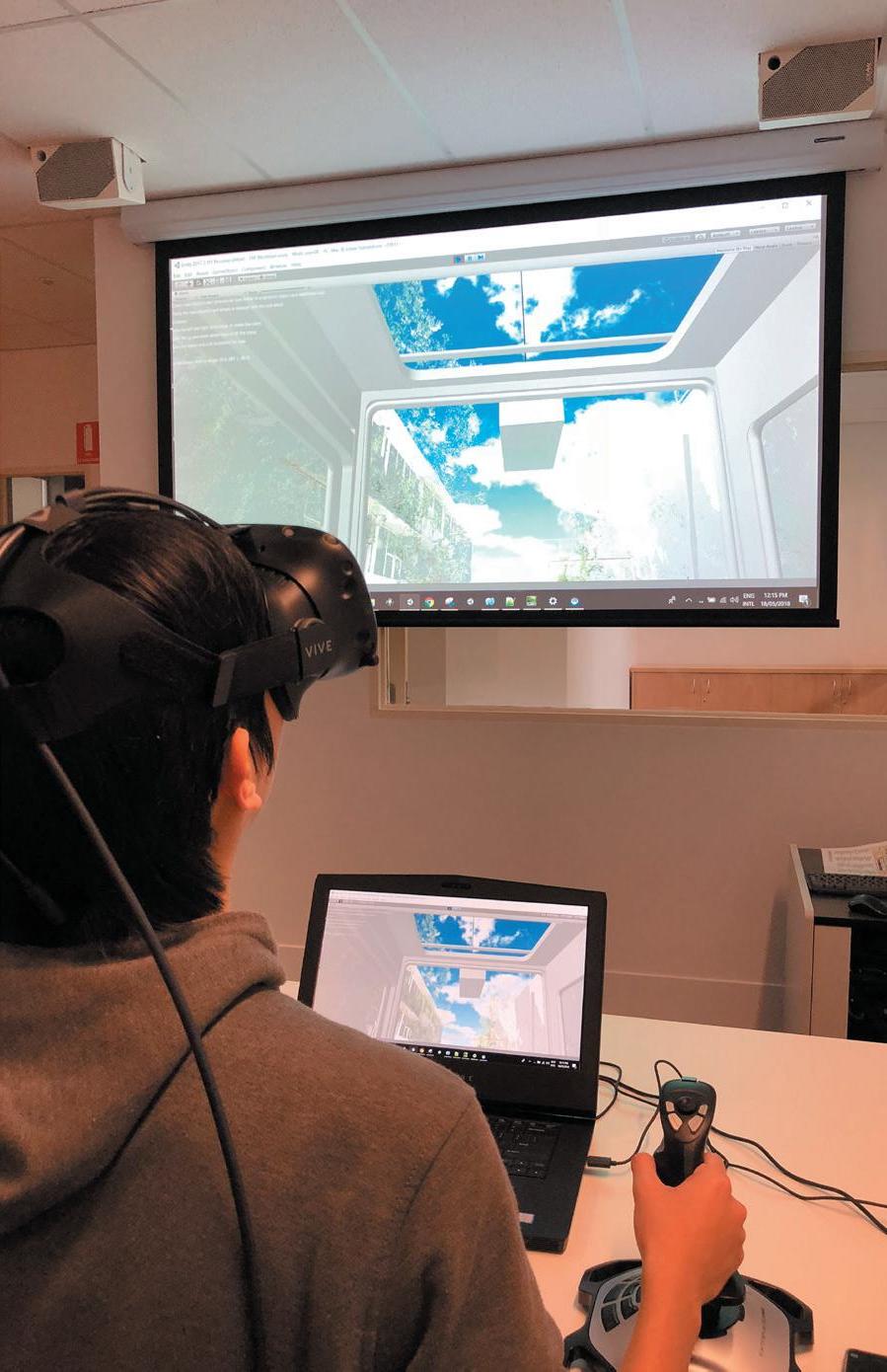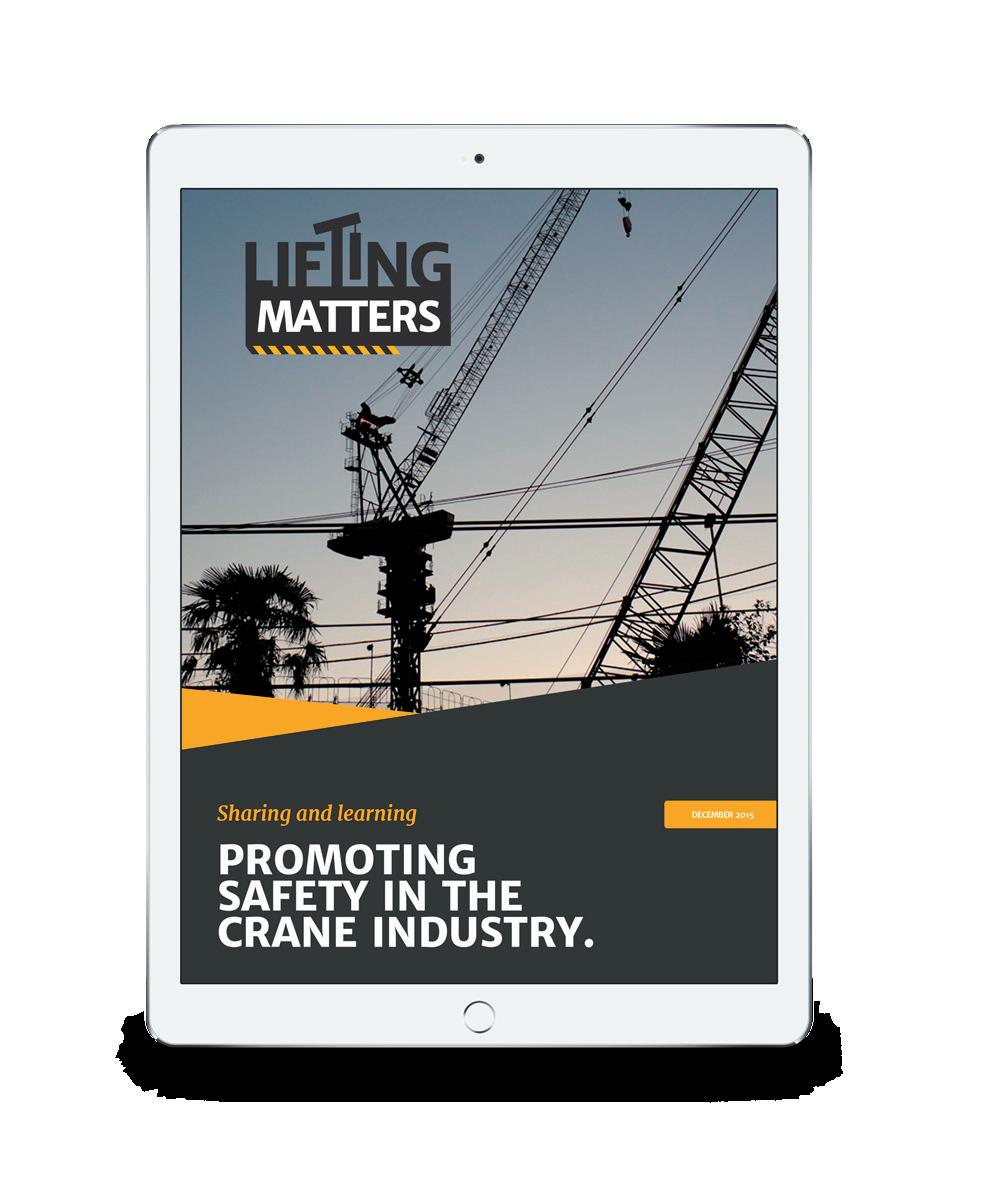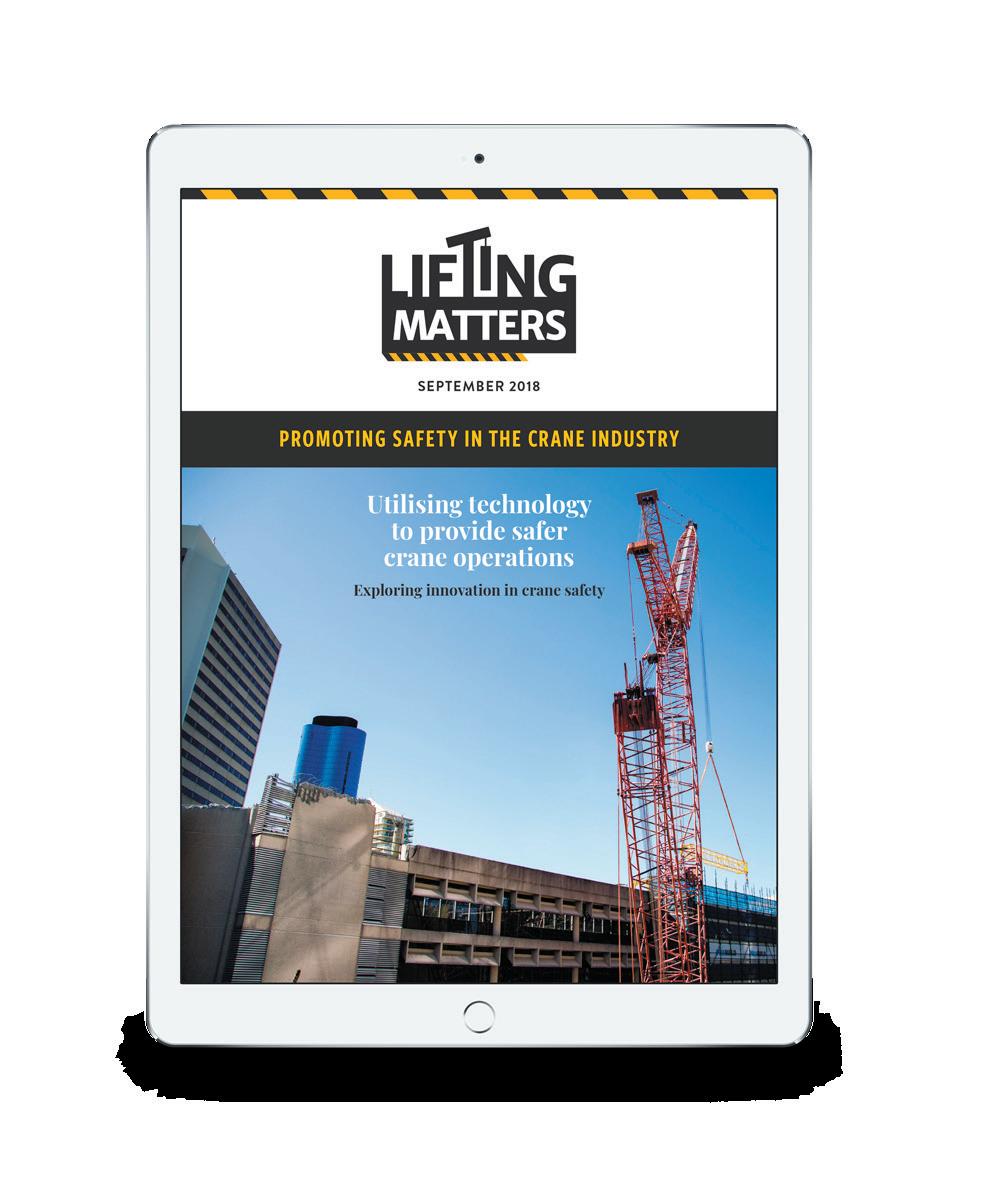
5 minute read
New technology applications could make crane driving safer and easier
A team from Monash University has been developing simulation technology for use in lift planning and crane operation. Led by Dr Yihai Fang, the team has been motivated by the poor safety record in the construction industry particularly crane-related deaths and injuries.
Current practices in lift planning and crane operation are outdated and do not harness the power of newly available technologies such as simulation and mixed reality. Dr Fang and his team have used these technologies to develop software that allows lift planners and crane operators to pre-plan and practice lifts in a closeto-reality and risk-free virtual environment. Dr Fang’s team has also used the same technology to develop a Real-time Smart Crane system that provides crane operators feedback on site conditions as they occur. For example, the Real-time Smart Crane system can provide visual or audio alerts if a worker approaches or walks under a load, if a boom is approaching an overhead powerline, or if the crane is going to hit surrounding structures. Mixed reality and simulations are buzz words at the moment, and it’s easy to dismiss this topic as irrelevant to the crane industry. But as crane operators or dogmen, what do these technologies really offer us?
Advertisement
“We want to add another layer of protection and assistance to the operator and everyone on the construction site,” Dr Fang said. “Our research is developing a system that will do this in two ways. Firstly, through training and practice runs for very complex lifts. Secondly, through real-time information to the crane operator that the human eye may not pick up.”
Better planning by your lift engineering team to keep you safer
Dr Fang’s Lift Virtual Prototyping system will enable your lift planning team to do more accurate lift plans. Being able to model the site and lift activities virtually and undertake simulation and analysis will ensure you are fully equipped with the right information and plan when you arrive on site with the crane. The lift plan can also be better integrated into the wider construction plan and schedule on site, increasing safety and efficiency by scheduling crane lifts safely around other construction activity.
Practice highly complex lifts before you are on site
For particularly tricky lifts in tight spaces or with interactions with other work fronts or disciplines on site, you can use simulation technology to have a trial or practice run. Data can be easily collected from the site using laser scanning technology and used to create a digital environment of the work site, referred to as an ‘as-built digital model’. You can have unlimited practice runs of the lift, factoring different wind speeds or surrounding activity. That way, when you arrive on site with the crane you are confident about what needs to be done and how to safely execute the lift.
Real-time feedback on site conditions
When making the safest decisions on site, you are relying on having correct and timely information about the site environment. The Real-time Smart Crane system will provide you with the right information at the right time. System sensors installed on the crane can capture motions such as slewing speed and angles, which will appear in a model of the site on a screen in front of you in the cabin, in real time. This essentially acts as a virtual spotter, returning potential risks like collisions, possible overloading or tipping. Audio or visual warnings will alert you to these risks, enabling you to make the safest decisions during a lift. If immediate danger is present, the crane can potentially autoshutdown to eliminate any danger to you or your workmates completely.
Collecting data to help you make better decisions in the future
Dr Fang’s team is also using the data collected from the system to get a better understanding of why we make the decisions we do at the work front. As a crane operator, when you use a crane simulation, data can be collected about the lift decisions you make. Different operators from different backgrounds and experience levels will make different decisions in any
given set of circumstances. Being able to capture this information helps to us get an understanding of this, and then develop better training programs to ensure you and your colleagues have the best possible knowledge base to do your job safely.

Where to from here?
Dr Fang and Monash University have been working closely with the Crane Industry Council of Australia (CICA) on this research, getting industry perspective, so the research is not purely academic. Some manufacturers and other industry innovators are also doing similar research into how simulations and augmented reality can be used to keep you safer and reduce the number of crane-related incidents. It might sound a bit futuristic, but soon we will be integrating virtual and augmented reality into the crane industry to get better safety outcomes, so get ready for it!
What do you think about using a simulation to practice crane lifts? We would love to hear your thoughts. Please email us at liftingmatters@writingstrategy.com.au and let us know how you see this technology playing a part in your daily job. For more information on Dr Fang’s and Monash University’s research, please contact Dr Yihai Fang at yihai.fang@monash.edu. You can check out Dr Fang’s Virtual Prototyping at youtu.be/apsmmPg7T0Y and the team’s Real-time Smart Crane System at youtu.be/2ucKEoaEvgY or youtu.be/k5mF-EWhOHI.


MISSED AN ISSUE?




Current and previous issues are all available for download on our website. Visit the archives at; liftingmatters.com.au


























